home / Best Course Platforms /Kajabi Review
We earn a commission from partner links on this site. This doesn’t affect our opinions or evaluations.
You’ve reached the final step of uploading your course, only to encounter a request for its description. You believed the work was finished, yet here you are, hastily trying to craft persuasive text. Does that scenario ring a bell?
We frequently observe course developers dedicating significant effort to strategizing, filming, and refining their course materials, while postponing the description writing until the very last moment. Although understandable reasons might exist for this approach, you really shouldn’t consider it an afterthought.
Within this comprehensive resource, we will present eleven valuable strategies for composing a course narrative that resonates with your ideal learners and persuades them to enroll. Additionally, we will provide illustrative examples of course descriptions, highlighting both effective and less successful approaches.
Let’s begin this exploration.
An effective course description furnishes all the essential details your prospective students require to make a well-considered enrollment decision. The precise definition of a course description might vary depending on the platform used, but for this discussion, we’ll encompass all content presented on your course’s primary sales page.
This essential information typically encompasses:
Numerous online courses adopt a straightforward arrangement for their sales page, presenting the entire description contiguously. Nevertheless, many course providers opt to structure this information in alternative ways.
Consider, for instance, this Master Herbalist program. Its landing page features a promotional video prominently at the top, with the details neatly categorized under four distinct tabs: About, Lessons, Career, and Certification.
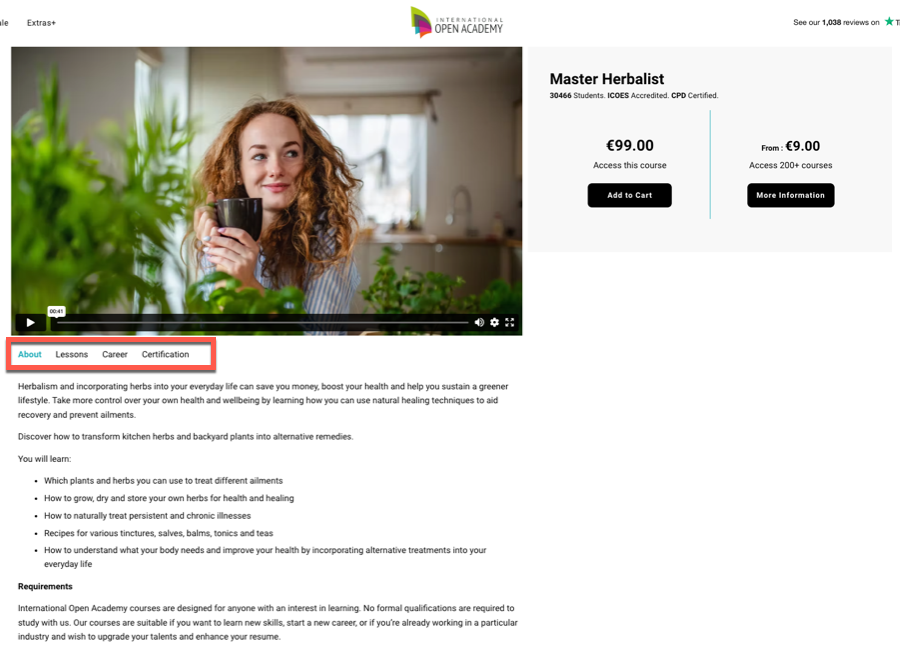
Although platform capabilities and visual presentation might lead to varied appearances for these descriptions, their fundamental purpose remains consistent: swaying a prospective student’s choice regarding enrollment in your educational program.
Let’s now proceed directly to revealing the strategies designed to assist you in developing truly exceptional course descriptions.
You might have encountered advice emphasizing the significance of being straightforward rather than overly inventive. Nevertheless, individuals often strive to differentiate themselves through ambiguous phrasing. The inherent danger lies in potentially confusing your intended audience about the actual benefits your course provides.
Should you possess a dedicated following that readily enrolls in any offering you present, you might consider adopting a more creative tone in your description. In such scenarios, it could even prove more impactful, fostering a deeper sense of connection with you and your educational material.
Conversely, if your potential students are unfamiliar with you and your course addresses fundamental concepts, it’s generally advisable to avoid overly intricate language to prevent any possible misinterpretations.
Another challenge associated with striving for cleverness is that it frequently consumes space that could otherwise be dedicated to conveying more substantial information. Within a course description, each word must contribute meaningfully. If a word or phrase offers no tangible benefit, it’s best omitted.
As an illustration, consider this blood pressure course, Understanding Your Vital Signs How Blood Pressure Works. An effort towards humor appears in the phrase, “under pressure to understand blood pressure?” Regrettably, this attempt at wit doesn’t land effectively and fails to enhance the description’s value.
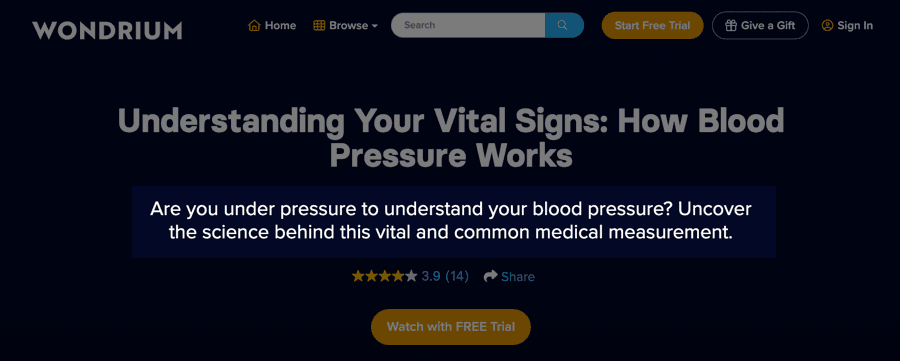
Wondrium’s blood press course landing page
Conversely, the program Become a Coffee Expert How to Make the Perfect Cup, on the other hand, skillfully showcases effective wit. By humorously listing “you should like to drink coffee” as a prerequisite, it successfully conveys a lighthearted character, offering potential students a preview of the engaging style they can anticipate upon enrollment.
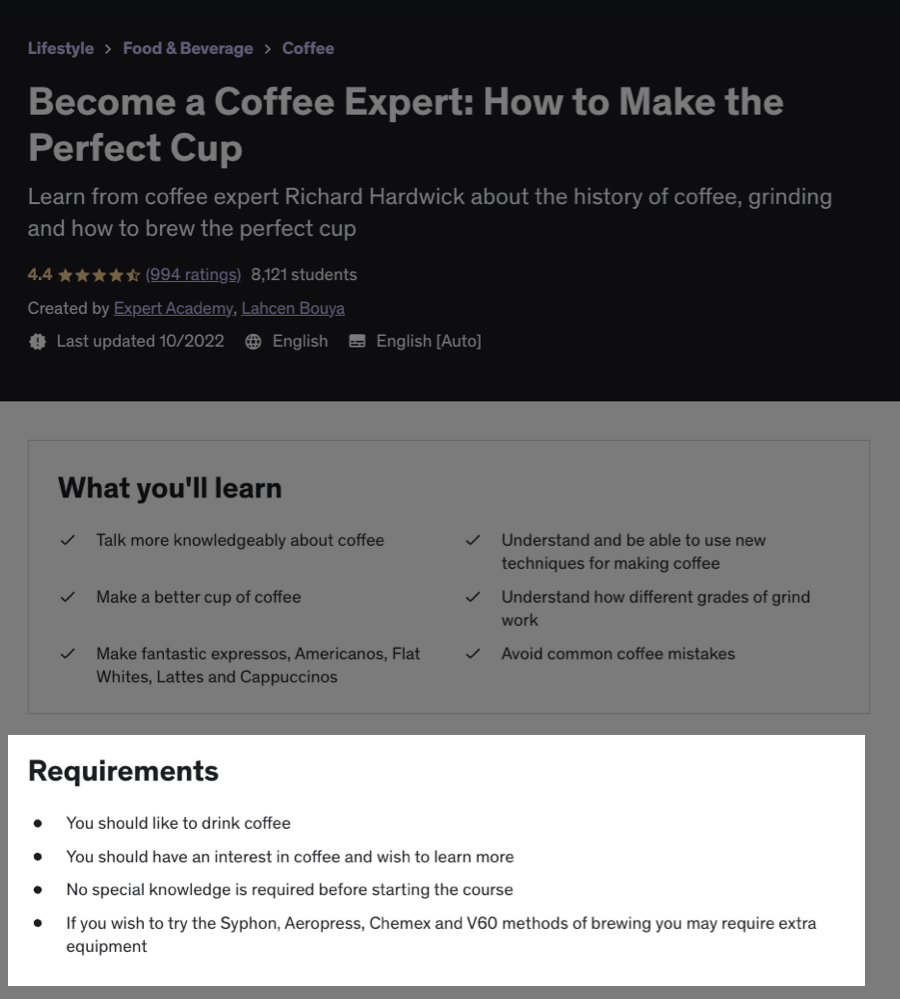
Become a Coffee Expert course’s landing pag
Numerous course developers inadvertently focus solely on depicting their potential students’ present challenging situations through phrases or inquiries such as:
While these somewhat negative approaches can yield results, they frequently draw individuals who aren’t genuinely prepared for significant personal growth.
Communication centered on apprehension doesn’t establish the groundwork for positive change nearly as effectively as language focused on achieving goals does.
Utilize goal-oriented phrasing if your program assists participants in navigating challenging life situations. Furthermore, when addressing difficulties, maintain your principal emphasis on the positive outcomes or ultimate achievements rather than dwelling on their existing condition.
The initial view for the Voice Body Connection program offers an ideal illustration of inspiring language. Asserting that “You deserve to have a powerful, confident voice. Now more than ever,” it effectively establishes anticipation for significant personal development.
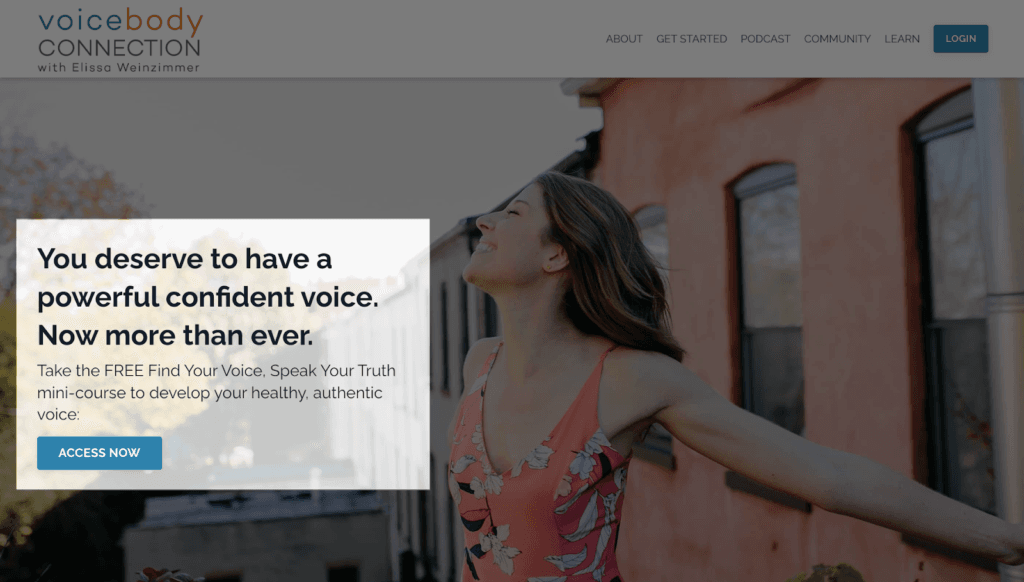
Voice Body Connection uses aspirational language on its sales page
Reflect on the type of participant this phrasing would likely engage, contrasted with an approach like, “Do you sense that when you speak, others disregard you?”
A significant challenge specialists often encounter is forgetting the experience of being new to a subject. This potential gap can hinder connection with their intended learners. This is precisely where demonstrating empathy becomes crucial.
Genuine empathy enables you to adopt a learner-focused viewpoint and perceive the subject matter through their eyes. It assists significantly in:
Returning to the Voice Body Connection illustration, the course designer skillfully connects with the core aspirations of her audience—specifically, their yearning for greater self-assurance.
Similarly, in the Virtual Kenpo program, the description highlights Kenpo primarily for personal protection.
Although martial arts encompass numerous dimensions, including physical conditioning, bodily discipline, mental fortitude, or self-regulation, this description emphasizes self-defense capabilities and includes a visual depicting a woman effectively countering a male attacker.
This approach effectively showcases empathy by tailoring the course positioning to align directly with the primary motivations of potential clients.
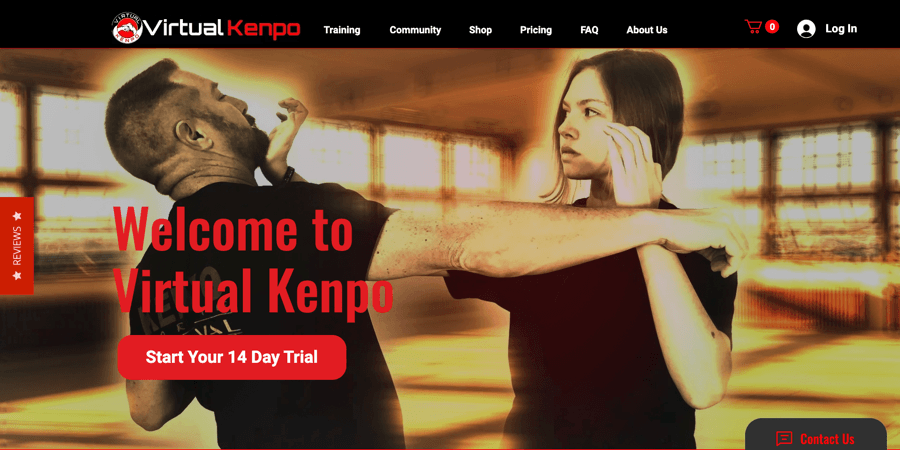
Virtual Kenpo is a good example of showing empathy towards the audience
While evaluating your course information page, try to approach it from your potential student’s perspective.
What specific outcomes are they searching for? What is the most pressing inquiry they desperately need addressed?
Bridge the gap between your expertise and their understanding by communicating in terms they readily comprehend.
Connecting emotionally with your learners becomes significantly simpler when you possess a distinct understanding of your course’s target participant.
The description page for the Virtual Kenpo program illustrates this principle quite effectively. By concentrating on a specific learner profile—someone seeking self-protection skills—it frames Kenpo primarily in terms of self-defense.
It vividly portrays, through both imagery and text, this individual envisioning defending herself against a larger, more powerful assailant. If she is actively searching for a viable solution, she is considerably more inclined to select this program over one marketed more generically.
Developing a precise profile of your ideal participant is fundamental to orienting your description towards the student’s needs rather than just the subject matter. Instead of merely listing the number of stances or forms she will master, the main page declares, “Training for Survival.” This approach centers the course squarely on her personal requirements.
Observing another instance, a course titled Mindset provides absolutely no clue regarding its target audience or specific application. The description lacks any defined focus, making it challenging for the intended demographic to recognize themselves within the message. While brevity has merit (refer to Tip #11), the entire description simply states: “Get into the right mindset to overcome struggles of all kinds.”
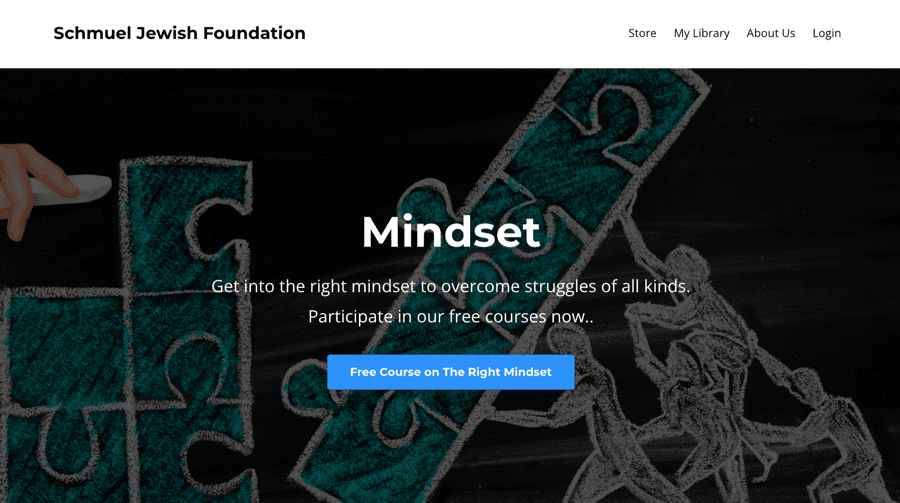
The Mindset course doesn’t make it clear who the course is for
When assessing your description, evaluate whether your target audience connects with your message and if they can genuinely envision themselves benefiting from it.
Aiming for universal appeal often results in connecting with no one specifically. A broadly targeted course struggles to address the varied ways your subject matter impacts individual participants. The perspective of stay-at-home parents will differ significantly from that of university students or business executives.
Your distinct personality ought to be evident in both your educational material and its accompanying description. Learners seek more than just data; they desire a sense of rapport. You can cultivate this by letting your individual character emerge.
Your course narrative should offer a glimpse into who you are as an instructor. Hints of the creators’ personalities are discernible in the descriptions for Become a Coffee Expert and the Voice Body Connection program.
Your personal flair is what defines you. When your authentic self is apparent, your course naturally becomes more distinctive.
Reflect upon the overall feeling of your course. Is it typically:
Examine Dr. Albert Wong’s Somatopia training program. One can perceive his dynamic presence through the visual design elements and the descriptive imagery he employs. He confidently showcases his expertise, thereby attracting influential thinkers, training coordinators, and expert practitioners. This serves as a skillfully executed demonstration of personal expression.
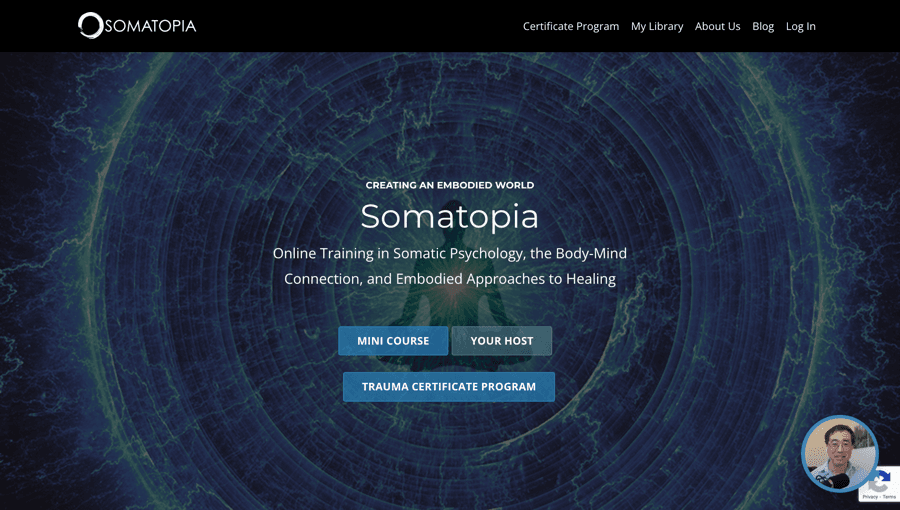
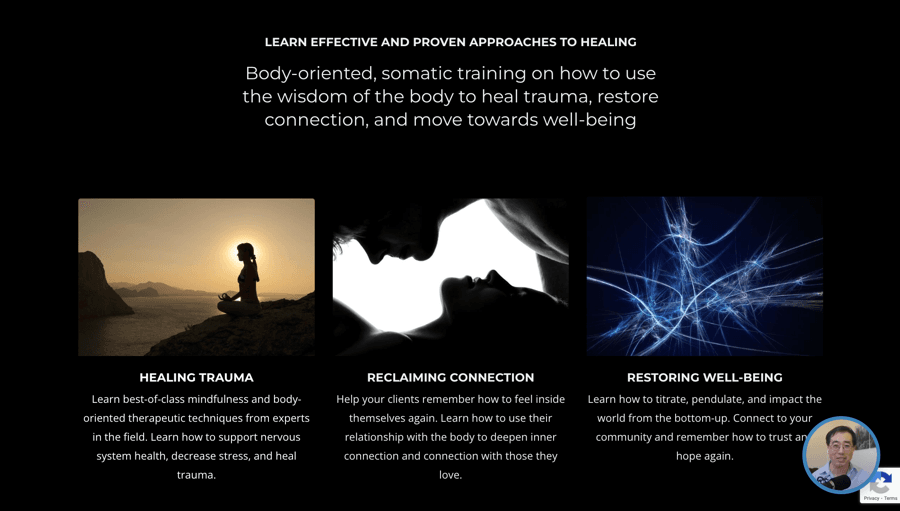
Somatopia course landing page
An additional outstanding illustration is the Doodle Institute. The program’s playful and creative atmosphere effectively showcases the instructor’s unique methodology, helping her course gain distinction and clearly conveying the anticipated experience for enrolled members.
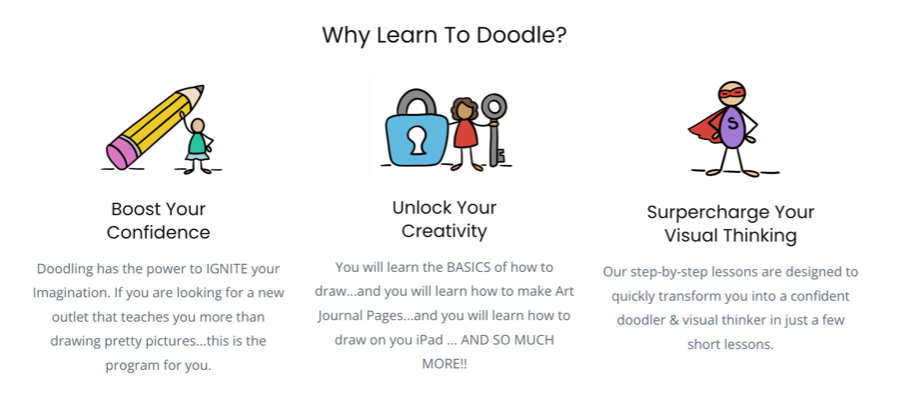
Doodle Institute uses fun and artsy style for its landing page
Course developers frequently make two typical errors concerning their background and qualifications. They either neglect to mention their credentials entirely, or they dwell on them excessively. Both approaches can undermine perceived expertise.
Sharing details about your professional background and formal training achieves more than simply declaring your expert status. For instance, what would your expectations be for a massage course delivered by each of the following three professionals?
Beyond reinforcing their professional standing, each profile provides valuable insight into the specific context where their expertise was cultivated.
Detailing your education and professional journey to build your reputation shouldn’t consume excessive space. Avoid going overboard. Numerous course instructors inadvertently diminish their credibility through excessive justification, which often appears defensive and detracts from the main message.
If your course topic is commonly mistaken for a related subject or has a very specific focus, it’s beneficial to articulate precisely what content is included and what has been deliberately excluded.
In the previously mentioned Voice Body Connection illustration, the description explicitly states that the program is not intended to assist individuals recovering from vocal cord injuries. While it might contain information helpful for preventing voice strain, that isn’t its primary objective.
Revisiting the Mindset course description, its scope remains ambiguous. The claim that it helps you “overcome struggles of all kinds” fails to provide a clear picture of the actual curriculum.
Defining the extent of your course might not always be essential. However, if there’s a possibility that potential students could confuse your offering with something else, it’s wise to incorporate clarification to prevent misinterpretations.
While written content is crucial, presenting it as an unbroken block of text is visually uninviting.
Three key elements can help you circumvent this problem: text formatting, strategic use of empty space (white space), and incorporating images. Employed adeptly, these allow your audience to navigate through your description effortlessly.
Let’s examine how the Doodle Institute utilizes these visual techniques:
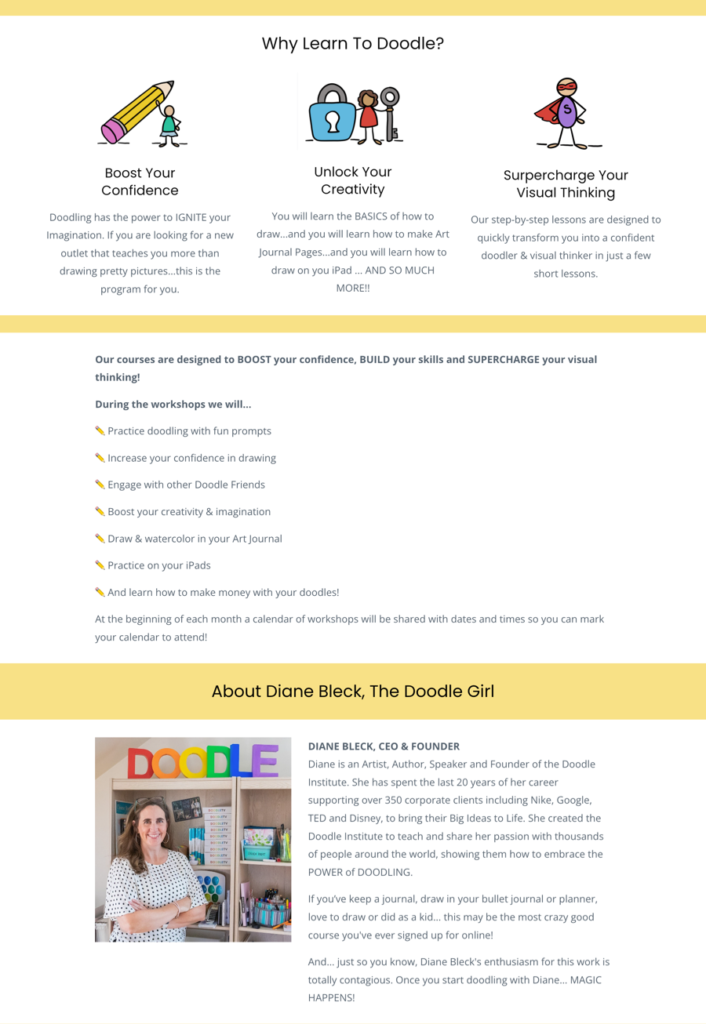
Doodle Institute’s landing page
Certain educational delivery systems offer more straightforward methods than alternatives for integrating visual components. Nonetheless, most platforms typically provide sufficient adaptability to refine the final presentation. Experiment with the available presentation tools to establish the desired atmosphere, forge a connection with potential learners, and enhance overall clarity.
After assembling all the necessary components, you must integrate them seamlessly to guarantee your text progresses naturally. Engaging with the text ought to resemble a fluid journey where each statement logically follows the preceding one in a coherent manner.
This principle extends beyond mere sentence construction and grammatical correctness. To achieve optimal flow, you should navigate to the beginning of your description and recite it audibly without interruption.
Reciting the text audibly enables your hearing to detect points where the natural progression falters. Your visual sense alone may not always identify these disruptions.
For an example of an exceptionally well-flowing course narrative, examine Joyce Maynard’s Writing Your Story class. When you articulate this description aloud, you will notice a pleasing rhythmic quality. This particular description is composed with remarkable skill.
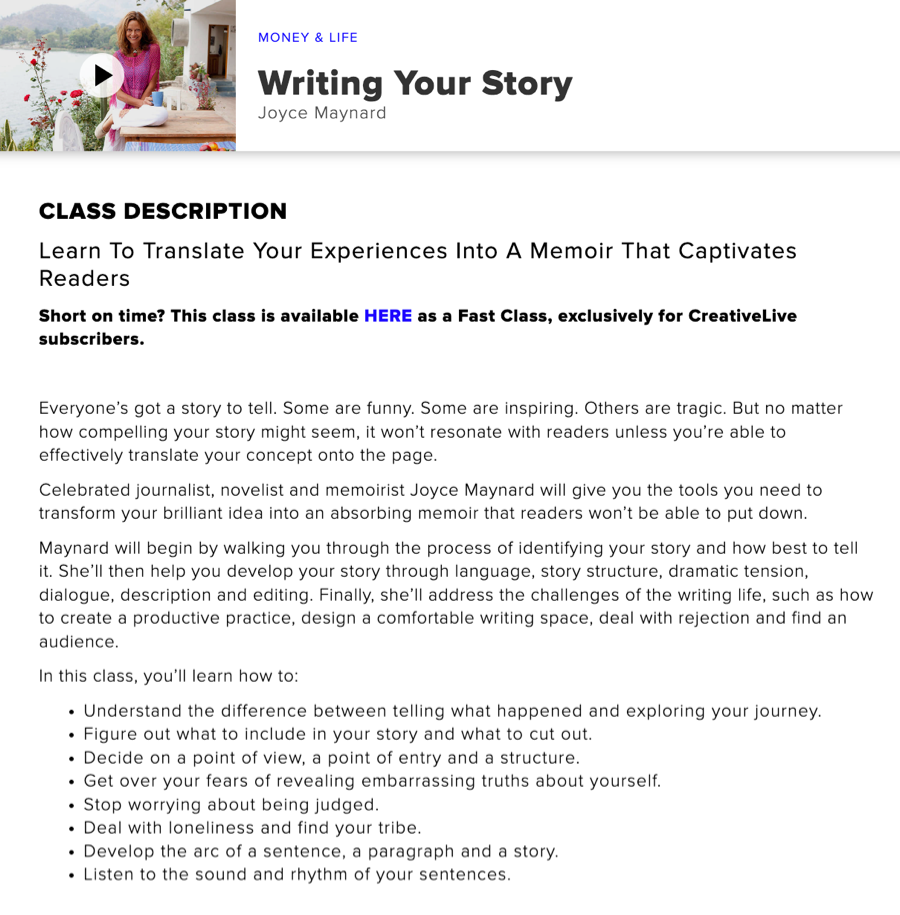
Writing Your Story’s course description flows really well
Employing excessive verbiage is a frequent occurrence, however, careful revision can effectively eliminate superfluous words. While reciting your text aloud to refine its flow, you will likely identify sentences that can be condensed or removed entirely.
Should professional editing services exceed your budget, consider utilizing an online revision assistant such as Grammarly.
An excellent illustration of conciseness can be found at STEEZY Studio. This website showcases an extensive array of dance programs, conveying this information with minimal text. Given the visual nature of dance, they effectively utilize videos and images.
Conversely, in the description for this Foundation of Sewing Skills program, the instructor elaborates on her personal sewing experiences and the establishment of her academy. The text would gain significantly more impact by omitting these less relevant sections.
The optimal moment to craft your course description is upon completion of the course material itself.
Attempting to write the description prior to finalizing your course often results in discrepancies due to last-minute adjustments. Furthermore, you might not fully capture the true essence and spirit of the product, which often crystallizes during the creation process.
The ideal time for writing your description coincides with the period when the excitement from finishing your course remains palpable. Harnessing this fresh energy increases your likelihood of conveying that inherent sense of satisfaction and achievement.
Once your content development is finished, you possess a clearer comprehension of the overall tone, stylistic elements, and definitive scope of your creation.
However, it is crucial to allocate dedicated time for this task, ensuring a sufficient interval between course finalization and its official launch. In straightforward terms, avoid delaying the writing of your course description until the final moments!
The manner in which you present your course holds significant weight. For a student prepared to commit, a thoughtfully composed description reinforces their confidence in the decision. For someone merely exploring options, your distinct voice and personality can decisively sway their choice favorably.
Initiate improvements and refine your description starting now. Utilize this provided checklist to evaluate your current course description and strategize for your subsequent one.
We trust this resource has effectively guided you on constructing course descriptions that successfully drive enrollments.
Should you have any inquiries, please feel free to share them in the comments section below.

Daniel NicFounder, SellingOnliceCoursesGuide.comis an entrepreneur and digital education specialist who founded sellingonlinecoursesguide.com, a platform dedicated to helping creators and educators successfully navigate the online course marketplace. Through his website, he shares insights and strategies for developing, marketing, and monetizing online educational content. His work focuses on empowering course creators to build sustainable online businesses while effectively sharing their knowledge with students worldwide.

Daniel Nic is an entrepreneur and digital education specialist who founded sellingonlinecoursesguide.com, a platform dedicated to helping creators and educators successfully navigate the online course marketplace. Through his website, he shares insights and strategies for developing, marketing, and monetizing online educational content. His work focuses on empowering course creators to build sustainable online businesses while effectively sharing their knowledge with students worldwide.

We respect your privacy and will never spam you.